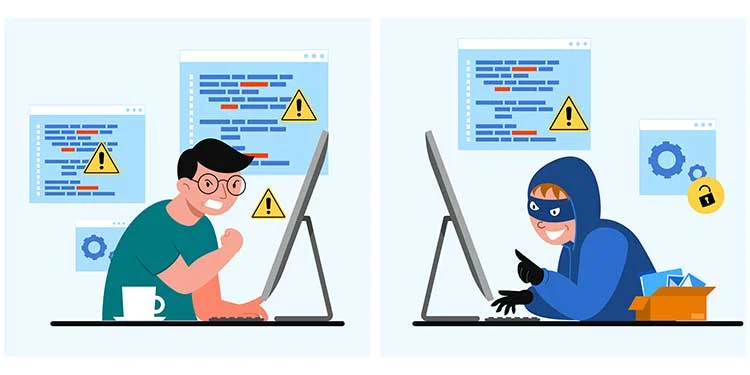Nowadays hacking and cybercrime dominate. It is estimated that hackers attack someone online every 32 seconds. While many of them target companies and organizations, others go after private individuals in an attempt to steal personal information from computers, cell phones and tablets. And check those hacked accounts, such as your email address, social networking profiles and bank accounts. For all this, read our article in which “how to tell if my computer has been hacked.” it has been told about.

Check that your computer has been hacked:
First of all check that your computer has been hacked. If you have sensitive, private files stored on your computer, check them in your directory browser. Cawley recommends noting your “last modified” times and dates, but not opening them. Opening them can activate malware. Instead, run an antivirus or anti-malware app, and back up files and folders before opening them. You should also check your firewall software and locate the log where its activities are stored.
“WARNING: Security Alert!”
“Hacking Detected …”
“YOUR COMPUTER MAY BE INFECTED”
When it comes to a computer being hacked, some signs are clear that are define above.
Most common attack:
let’s take a look at two of the most common attacks and how to stop them, both while they’re happening and in the future.

First attack is DoS (Denial-of-service):
DoS attack occurred when your password seems to have randomly changed for an account or device. A DoS attack can sometimes culminate in a ransomware attack, which means a hacker will attempt to hold your sensitive stolen data ransom. The easiest way to avoid DoS attacks is to follow basic security protocols. These include using a strong, unique password on every site or using a secure password.
let’s look at 4 additional steps you can take to prevent a DoS attack:
1. Check your online account settings:
hackers by keeping an eye on your online accounts to see if there are any recent changes. It’s easy to overlook this step, especially if you don’t use a particular account often or you don’t look at your own page frequently.
2. Check for suspicious logins:
when someone has logged into your account and from what location or IP address (click here to learn how to find your IP address). If you do not recognize the login attempt, then you should immediately change your password and notify the company that your account was compromised.
3. Enable two-factor authentication:
Two-factor authentication makes it more difficult for hackers to access your account and adds another layer of security, even if someone steals your password.
4. Prevent remote access:
If you want to know how to check whether someone is remotely accessing your computer without your permission, follow these steps:
- Press Ctrl+Alt+Del
- Click on Task Manager
- Review your current processes
- Identify if there are any processes or applications that look unusual or suspicious
- Another option is to check the Windows Event Viewer app to look for any unfamiliar remote access.
Second attack is suspicious applications installed on your PC
Malware and someone may be using them for nefarious purposes like logging your keystrokes or getting into your online accounts. If you do notice suspicious applications in your list of installed programs, it’s imperative that you uninstall them immediately.
1. Fake antivirus software messages and pop-ups:
If you see random pop-ups on your screen, do not click them. Instead, close your browser and start it again in incognito mode and reload the page. Then, check your computer’s antivirus program, firewall, task manager, and registry to make sure they’re not disabled or altered in any way.
2. Trojan attack:
Fake antivirus software may also serve as a Trojan. If you fall victim to a Trojan attack, there are steps you can take to mitigate it. First, you need to format your hard drive, which may be painful if you haven’t backed up your important data.

3. Browser toolbars and search redirection:
If you made this change by accident, it’s easy to fix. But it may actually be a sign that you’re the victim of a virus that is actively redirecting your browser. There is no single type of virus that performs this function, but it’s important to know when your browser is hijacked and how to clear it back to your default/preferred homepage and search engine.
What are the signs of a hacked computer?
These 7 common signs that a computer, network or organization has been hacked:
- Appearance of applications you did not install
- Unusual disk activity
- Friends and contacts receive strange messages from you
- Passwords aren’t working
- Unwanted browser toolbars, search redirection and popup ads
- Unwanted software installations
- Strange network traffic patterns
